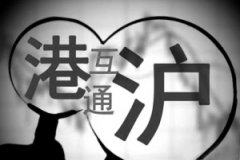外国风土人情中英文版
I'M QQ
二、旅游英语翻译的几种方法解释是指增加的部分是对字’ 词’ 句的字面意思的解释% 如花港观鱼) Hua Gang Guan Yu"Viewing Fish at Flower Harbor* "孤山) Gushan"Solitary Hill* "紫来洞) Zilai Cave"Purple Source Cave* %# 西安古称长安$可译成# Xi'an was called Chang'an"or+everlasting peace,in ancient times$"& 天安门$可译成& Tian'anman"the Gate of Heavenly Peace$"这样的译法将名称与其含义联系起来"便于外国游客记忆"加深他们的印象"增加他们的游兴%又如"& 端午节那天"人们都要吃棕子$可以译为& During the Dragon Boat Festival, or the Duanwu Festival (which falls on the fifth day of the fifth lunar month), it is a common practice to eat zongzi, which is a rice pudding wrapped up with reed leaves$%& 大乘寺坐北朝南"院墙按八卦建造$ 可以译为& The Great Vehicle Temple faces south with its walls shaped after the Eight Diagrams) combinations of three whole or broken lines formerly used in divination* $% 八卦是我国古代的一套符号"用于占卜% 一般的中国人都不知道八卦"何况外国游客% 所以此处务必加以解释%在旅游英语翻译中采用类比的手法常常有喜人的效果% 如把杭州历史人物西施比作Chinese Cleopatra"将民间人物月下老人译作Chinese Cupid% 浙江兰溪一个济公纪念馆介绍济公事迹的英译文"也是采用类比的方法%中文为& 济公劫富济贫"深受穷苦人民爱戴$"其英译为& Jigong, Robin Hood in China, robbed the rich and helped the poor, he was loved by the poor people$"由于采用了& 以此比彼$的手法拉近了外国游客与中国文化的距离!使他们产生亲近感!激发他们的游兴"增加与解释不同!是指为了更好地理解某字#词#句而添加的相关知识和背景资料" 中国悠久历史中有许多著名事件!英雄人物!典故传奇等" 旅游资料中经常提到的许多风景名胜往往与他们有关!不增加说明!一般外国游客就无法理解" 如!$ 绍兴是越瓷的产地%的英译文是$ Shaoxing is the home of Yue Porcelains. Yue is a state name used to refer to the Shaoxing region in ancient China%" 在此!译文增加了一个句子来解释$ 越%这个专有名称" 又如!$ 林边有一洞!叫白龙洞" 传说& 白蛇传’ 的白娘子曾在此修炼%的英文翻译为$ Near the forest is the White Dragon Cave which is said to be the very place where Lady White, the legendary heroine of the Story of the White Snake, cultivated herself according to Buddhist doctrine%"这句如果没有添加!外国游客虽然也能看懂!但会产生怀疑!白蛇娘娘在这么小的洞里怎样来修炼呢( 有了这些添加之后!他们方能正确地理解原文!原来修炼一事纯属传说"有时候!在翻译旅游资料中!删减是十分必要的" 因为大多数外国游客阅读这些资料都是为了了解中国的风土人情!增加一些旅游兴趣" 中国人在写事状物时喜欢引经据典
追问:
不是旅游,是风土人情。
帮忙再想想。150字左右就可以了。
英文中文要分开。
谢谢!










